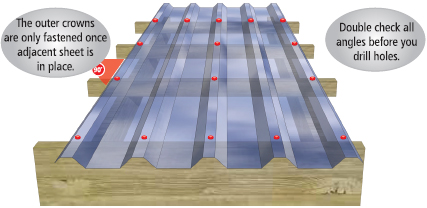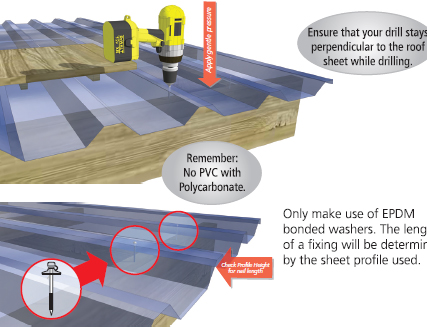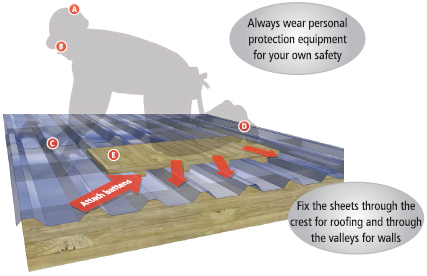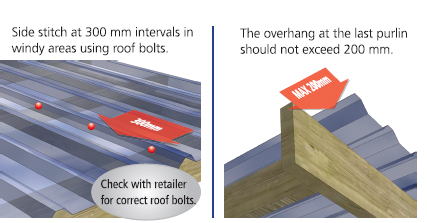Installation of Roof Sheets
Mark the crowns to be fastened. You will fasten every crown at both ends of the sheet, and alternative crowns on intermediate purlins.

If there are ends laps (overlapping sheets generally required when covering large areas), these will be fixed at every crown. (Note: Do not fasten through the valley of the profile).

Pre-drill the sheet at these points, allowing for a 1 mm – 2 mm clearance on GRP (Fibreglass) a 2 mm – 6 mm oversized on Polycarbonate to accommodate expansion and contraction.

Use a duck board (Piece of flat timber- to straddle purlin to purlin) on the roof to distribute your weight evenly when working.
Fix the started sheet down, leaving the side laps and end laps, (if using more than one sheet in length) to be fixed when the next sheet is in place. (Not: end overlaps should not be less than 300 mm)
Fasten the fixings, ensuring that the roof screw is not overtightend. The crown will now be held slightly in tension.

If waterproofing is a necessity, we advise to seal end laps on roof sheets which have a pitch of less than 20 degrees. Use a compatible sealant for Fibreglass and Polycarbonate roof sheets, only Sealing strips and neutral Silicone sealants are suitable.
